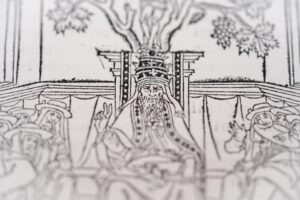Harold Bell Lasseter was an odd character. People described him as both a charlatan and a “man of jumbled moods”.
From the 1920s to the 1930s, he caused quite a stir in Australia. He claimed to have found a 10km deposit of gold in the MacDonnell Ranges. Yet to this day, no one has substantiated his claim. Treasure hunters have scoured the Outback in the hope that his story was not completely fabricated.
The lost reef
What Lasseter described was something straight out of an adventure novel. He claimed he found a large outcrop full of different colored quartz and ironstone. He described gold veins 10km long, over two metres high, and three metres wide.
This discovery supposedly took place in 1897, when he was in his late teens. After he hit the jackpot, he got lost until an Afghan traveler eventually found him, nearly dead. His rescuer took him to a man named Joseph Harding, whom he convinced of his story. However, this claim raised several red flags. Foremost among them, what was an Afghan traveler doing in the Australian Outback? No one else saw the purported rescuer. Remarkably, the suspicions did not arise at the time.
Years later, in 1929, Lasseter went about convincing the Australian Workers Union to fund an expedition to recover this lost reef. (Reef is a mining term for this sort of gold outcrop.) He was convincing enough to secure some funding. He launched an expedition in 1930, but the situation quickly soured.
The expedition group started to suspect that Lasseter’s claims were fraudulent. He had been leading them based on his memory of landmarks from the initial find. The group ended up fighting, both verbally and physically. Ultimately, they abandoned Lasseter in the middle of nowhere with only one man, Paul Johns. Eventually, Johns left too, believing that Lasseter had gone insane.
The following year, Lasseter’s body was discovered in a cave. He had died of malnutrition and dehydration. However, his diary, also in the cave, claimed that he had met an Aboriginal group and found the reef again.

Central Australian Outback. Photo: Shutterstock
An untrustworthy man?
Those doubting Lasseter’s claims start with his personality. His noted eccentricity caused discord at his workplaces. They considered his interests “odd”. He enjoyed pottery and singing hymns in his spare time. He often changed the details surrounding his discovery, from landmarks and geography to important dates. In 1917, he had injured his head, which could have exacerbated these issues.
The Great Depression hit Lasseter hard. He and his family fell into hard economic times. It is quite possible that he believed his story might make him money. Stress, desperation, and the harsh conditions in the Outback could have exacerbated his crazy behavior on the expedition.
Treasure hunters
Lasseter’s dubious claims have not deterred treasure hunters. Historian Chris Clark and Vietnam War veteran Bill Decarli spent decades trying to retrace Lasseter’s steps. They believe that the reef actually exists.
Clark’s own grandfather, Olof Johanson, had a connection to Lasseter. Clark came across Johanson’s briefcase, which contained letters dating from 1928 and 1929. They reference the reef’s discovery and its location. However, Clark was still not able to find it.

During Lasseter’s 1930 expedition, camels head toward Uluru (Ayer’s Rock). Photo: NSW State Library
More recently, Decarli declared that he had found the reef east of Alice Springs. He stated that he found three hills and a 16km quartz outcrop, as per Lasseter’s description. Could this be the reef or just a reef? Since publishing his book in 2021, Decarli’s claims have yet to be publicly verified.






